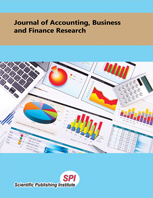The impact of adopting Basel III liquidity coverage ratio, stable funding ratio, and leverage ratio on lending in the Malawian banking sector
DOI:
https://doi.org/10.55217/102.v18i1.748Keywords:
Basel, High-quality liquid assets, Leverage ratio, Liquidity coverage ratio, Stable funding ratio, Tier 1, Tier 2.Abstract
This paper examines the impact of adopting Basel III Liquidity Coverage Ratio, Stable Funding Ratio, and Leverage Ratio on lending in the Malawian banking sector. Malawi’s banking industry regulators are planning to transition to Basel III from the current Basel II regime. This paper pioneers an assessment of the implications of this move for the banking industry. The study uses monthly data for the period January 2010 to December 2022, the Feasible Generalised Least Square (FGLS) Panel Regression model with bank-specific variables (X) and macroeconomic controls (Z). The study finds that Tier 1 has a positive and significant impact on Malawi’s banking sector lending growth, while Tier 2 has a negative and insignificant impact on banking sector-wide lending growth effects. The non-risk weighted asset Basel III leverage ratios have significant and negative impacts on Malawi’s bank sector lending growth. And that the liquidity coverage ratio (LCR) had a positive and significant effect in explaining variability in lending in Malawi banking overall, while the introduction of the stable funding ratio (SFR) had a positive and significant impact on banking sector-wide lending growth effects. The study also found that the Basel III Capital and Liquidity Rules have different effects on firm-level lending for the 8 banks in Malawi.


